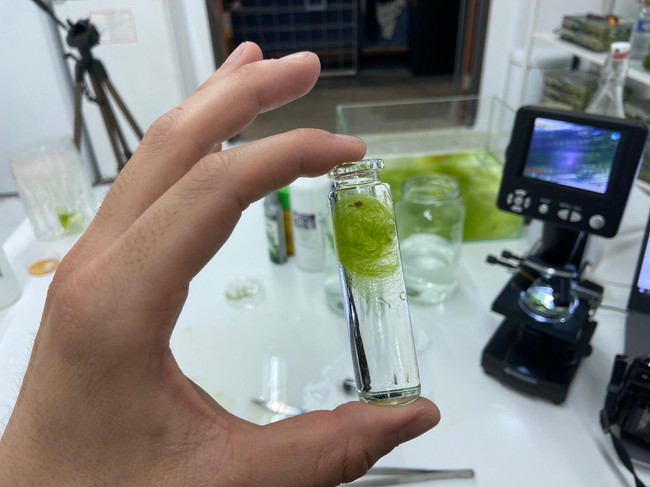top of page
Living Couch.
The fact that we have a breathing atmosphere on Earth is largely due to
algae. Could these water and land creatures be the secret to solving climate change and saving ourselves and the planet?



Algae produces no less than 33% of all oxygen on Earth. They are powerful photosynthesis and can consume more carbon dioxide than trees. In the right growing conditions, it is even capable of converting CO2 into oxygen 400x more efficiently than trees and plants. Which, according to Bob Hendrikx, makes it an interesting organism to work with. “Algae can purify polluted air in our future cities and store CO2. It is what the organism prefers to do.” It is exactly this power that the inventor, architect and biodesigner wants to use to create healthy cities in which there is collaboration with nature.
As part of the Voorlopers exhibition, he designed a 'Living Bench' filled with various algae from the palace pond. “It is a first experiment into living street furniture that purifies the air”. The design is part of a larger vision to partner with one of the world's oldest organisms to create sustainable cities. This includes living clothing, facade elements and street furniture.



Visitors can sit, lie or even jump on the object so that the algae get extra oxygen to realize a more positive impact. The concept consists of organic objects -inspired by the microscopic structure of algae- consisting of biodegradable plastic containing small bioreactors called “pockets” that are filled with various local organisms. By means of a solar-driven air pump, polluted air is supplied to the organism, so that fresh air will leave the object. “As a residue you end up with a lot of algae, which can potentially offer a solution to global problems,
for example as a biofuel for the energy transition or as a protein source for the growing food shortage”. In addition, Hendrikx also finds it important to liberate and bring out the power and beauty that is locked up in our Dutch water. “I can spend hours watching the poisonous green slimy threads magically slowly create air bubbles.”


Working with living organisms is something Bob Hendrikx does more often. “Imagine if all our everyday objects were alive”. That is the vision of the future of the up-and-coming bio talent who exhibits – alongside established Dutch names such as Van Lieshout, David Bade and Zeger Reyers – from 13 May to 5 August in Paleis Soestdijk. He proposes to replace the dead materials that we now make our things from with living ones. For example, he designed the Loop Living Cocoon, a sustainable coffin that enriches the earth made of mycelium, or mushrooms.
The box is completely degradable, it enriches the earth and is therefore a source of new life. This living innovation -of which 200 have already been used in Northern Europe- is also exhibited in the wooded park of Paleis Soestdijk.
Combining architecture and microbiology, the exhibition shows how our future cities can purify polluted air, sequester carbon and play a role in future energy and food resources, while allowing city dwellers to enjoy greater ecological awareness through the magical world of local experience algae.
bottom of page